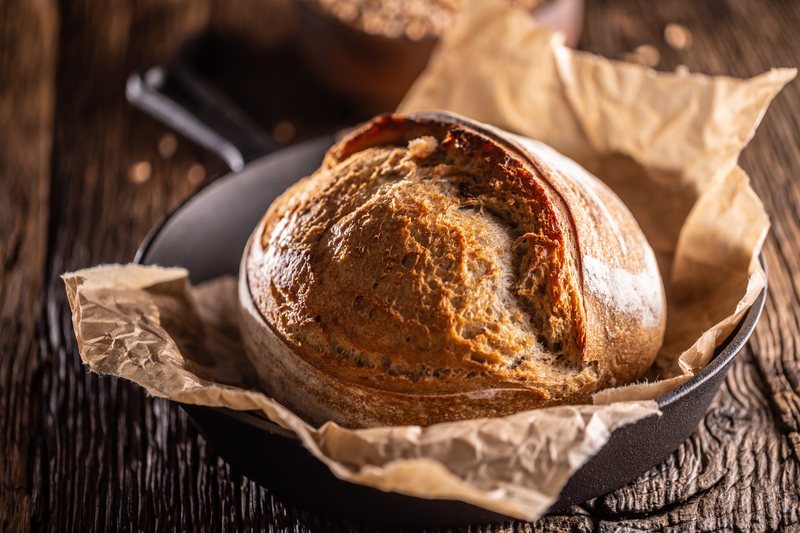 Baking bread is not only a delicious culinary tradition but also a fascinating scientific process.
Baking bread is not only a delicious culinary tradition but also a fascinating scientific process.
When flour, water, yeast, and other ingredients come together, a magical transformation occurs.
But is this transformation merely physical, or does it involve chemical changes as well?
In this article, we will explore the science behind baking bread and determine whether it qualifies as a chemical change.
Chemical Reactions in Bread Making
Bread-making involves a series of chemical reactions.
When yeast is mixed with warm water and sugar, it undergoes fermentation.
During this process, the yeast converts the sugar into carbon dioxide gas and alcohol.
The carbon dioxide gas gets trapped in the dough, causing it to rise and create those airy pockets characteristic of well-baked bread.
This process is crucial for producing light and fluffy loaves.
Formation of Gluten
 The formation of gluten is a crucial chemical change that occurs during the bread-making process.
The formation of gluten is a crucial chemical change that occurs during the bread-making process.
Wheat flour contains two proteins, glutenin, and gliadin, which, when mixed with water, combine to form gluten.
During the kneading process, these proteins align and intertwine to create a stretchy and elastic network within the dough.
This gluten network gives the bread its structure and allows it to trap the carbon dioxide produced during fermentation, enabling the dough to rise and develop those characteristic airy pockets.
Without the formation of gluten, the bread would lack the desired texture and would not rise properly during baking.
Maillard Reaction
The Maillard reaction is a significant chemical change that occurs during the baking of bread.
It is a non-enzymatic reaction between amino acids and reducing sugars present in the dough.
As the bread bakes at high temperatures, the Maillard reaction leads to a series of complex reactions that result in the browning of the crust and the development of unique flavors and aromas.
This reaction is responsible for the delicious nutty, toasty, and caramel-like notes that we associate with well-baked bread.
The Maillard reaction adds depth and complexity to the overall taste profile of bread, making it an essential aspect of the baking process.
Starch Gelatinization
 Starch gelatinization is a crucial chemical change that occurs when bread is baked.
Starch gelatinization is a crucial chemical change that occurs when bread is baked.
Starch, a complex carbohydrate present in flour, undergoes this process when exposed to heat and water during baking.
As the temperature rises, the starch granules absorb water and swell, causing them to lose their original structure.
This swelling of starch particles contributes to the thickening of the dough and helps create the final crumb structure of the bread.
Starch gelatinization is essential for achieving the desired texture and consistency of the bread, and it plays a significant role in the overall baking process, contributing to the satisfying mouthfeel of well-made bread.
Caramelization
Caramelization is a crucial chemical change that occurs during the baking of bread.
It is a complex process in which sugars in the dough undergo transformation when exposed to high temperatures.
As the bread bakes, the sugars break down into simpler compounds, resulting in the development of a rich, golden-brown color and a sweet, caramel-like flavor.
This process enhances the overall taste and appearance of the bread, creating an inviting crust that adds to its appeal.
Caramelization is a key element in producing the enticing aroma and delectable taste that we associate with well-baked bread, making it an integral part of the baking experience.
Bottom Line – Is Baking Bread a Chemical Change?
 In conclusion, baking bread involves a series of chemical changes that are fundamental to creating its unique taste, texture, and appearance.
In conclusion, baking bread involves a series of chemical changes that are fundamental to creating its unique taste, texture, and appearance.
The fermentation of yeast, the formation of gluten, the Maillard reaction, starch gelatinization, and caramelization are all integral to the art of bread making.
So the next time you bake or enjoy a loaf of bread, remember the fascinating chemistry at work behind this age-old culinary delight.


